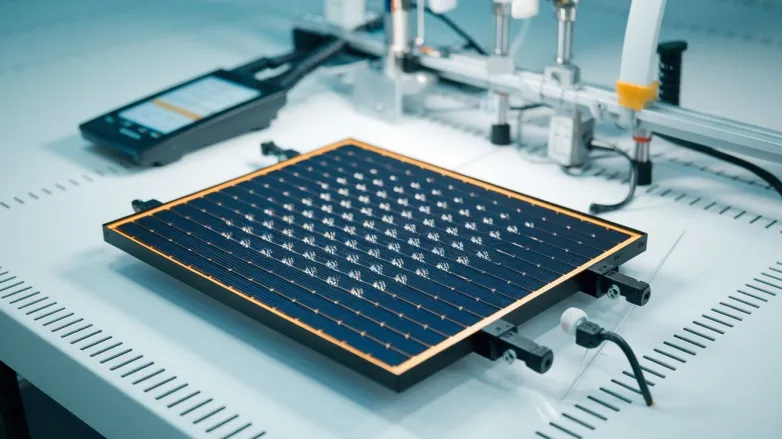New passivation chemistry unlocks stable, efficient fully inorganic perovskite cells
- A multinational team reported a novel 2D/3D passivation for fully inorganic perovskites, surpassing 21% cell efficiency and 950 hours of 85°C operation.

A research collaboration spanning EPFL, Northwestern University, the University of Toronto, Kaunas University of Technology (KTU), and Toin University of Yokohama has unveiled a passivation strategy that pushes fully inorganic perovskite solar cells to new territory: over 21% device efficiency with stable operation for hundreds of hours, and nearly 20% on mini-modules whose active area is more than 300× larger than typical lab cells. Crucially, the team demonstrated >950 hours at 85 °C under continuous illumination—an accelerated test regime that approaches the reliability bar set by commercial silicon.
Passivation is the art of calming a perovskite’s defect-prone surface. In hybrid perovskites, thin 2D capping layers can both protect against moisture and improve carrier dynamics. Fully inorganic perovskites, however, have resisted such 2D/3D “heterostructures”—the layers simply didn’t adhere. The breakthrough came from KTU chemists, who synthesized perfluorinated 2D ammonium cations. The electronegative fluorine atoms reduce electron density at the ammonium group, enabling robust hydrogen bonding between the anchoring ammonium and lead-iodide fragments at the perovskite surface.
Result: a stable 2D layer that reliably bonds to a 3D inorganic perovskite, creating a chemically inert interface that suppresses defects and blocks environmental ingress. Devices built with this chemistry not only hit lab-scale efficiencies above 21%, they also translated to mini-modules nearing 20%—a strong sign that the approach scales. Thermal and light-soak stability at 85 °C for more than 950 hours points to durable interfaces that resist ion migration and phase changes, historically the Achilles’ heels of inorganic formulations.
Why it matters: perovskites are racing from records to reliability. A passivation route that works for fully inorganic absorbers widens the materials toolbox—offering prospects for higher temperature resilience, simplified encapsulation, and better compatibility with tandem stacks over silicon. The researchers emphasize that standards specific to perovskite modules are still evolving; for now, they validated against a blend of silicon and thin-film protocols plus construction-related requirements to benchmark safety and performance.
Next steps will probe long-term outdoor behavior, UV robustness, and manufacturing repeatability—can these cations be made at scale and integrated with roll-to-roll or slot-die coating? If so, the chemistry could accelerate the march toward bankable perovskite modules that couple high efficiency with the kind of stability investors already expect from silicon.
Also read

